A Variante 1016 engine. Photo: Gustav Drake
Over the years, I have thought a great deal about the difficulties associated with developing the Fulvia’s engine but I still do not have the full answer (or anything like it) although I do have a few ideas.
To me the key word (or rather, words) is volumetric efficiency. One clue is that whilst the 1600 would obviously provide more torque by virtue of its capacity, it seems that developers could get substantially better specific outputs from the 1300. There are two factors here: one is valve sizes – and the other, port sizes.
The standard valve size on the 1300S engine is 37mm for the inlets and 33mm for the exhausts. The 1600’s valves are only 1mm bigger. Now, consider the difference in capacity: the 1600 is 22% larger. A couple of minutes with the calculator shows that the 1600’s valve area is only 5.8% greater than the 1300’s. Now I am not suggesting that the valve area should be 22% greater for the 1600, as the greater depression will of course pull more air through a given aperture. Still, 5.8% seems a bit mean. Four-cylinder engines of similar capacity and of the high-performance type would typically have inlet valves of 41mm and exhaust valves of 38mm, perhaps more. And of course this is not the end of the story: there are the ports to consider. Apart from the fact that the internal water passages limit considerably the opening up of the ports, there is what I call the “No 4 exhaust port problem”. Straddling No 4 exhaust port are the two right-hand rear cylinder head bolts. They are just 36mm apart centre to centre. For a performance engine it is generally considered that the exhaust port diameter should be the same size – or greater than – the exhaust valve diameter, obviously impossible. On the 1600 head, about 33mm is the limit and even this can be a problem sometimes, it being quite normal to break through the port wall where the bolts are.
From the above it should be apparent that there is a built-in advantage with the 1300 engine in volumetric efficiency terms, since the ports and valves are virtually the same size as those on the 1600 – for 22% less capacity - and there are other factors too.
I have no mathematical pretensions, but I do know that good balance in an engine is influenced both by engine speed and by the weight of the reciprocating parts – the lower the better. In the case of the Fulvia, there are probably additional factors: the engine architecture (crankshaft centre line is not at the apex of the V, although this is probably necessary) bore/stroke ratio, con-rod/stroke ratio (large on the Fulvia and generally seen to be a good thing) V-angle and so on. What is undeniable is that the smaller Fulvias are definitely smoother, with a good 1200 being almost turbine-like. Perhaps this is one of the reasons why the tuners can get the 1300 to buzz up so readily?
Other influences include pumping losses (the breathing arrangements are poor) and frictional losses – due to crankcase distortion and other matters associated with the architecture. Finally, two important factors both entirely due to the strange (and actually unnecessary) idea of installing the engine at 45 degrees: the nasty curve in the inlet manifold, together with its unequal length passages, and the limited space for a proper exhaust manifold.
How it began: Fulvia berlines at Fulvia 40 in Turin in the evening



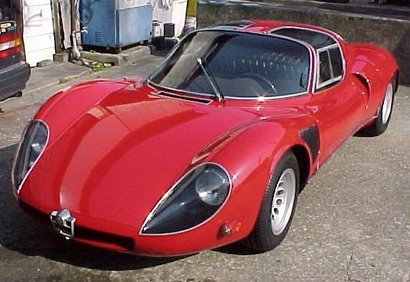
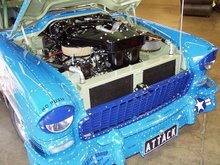
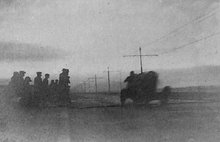

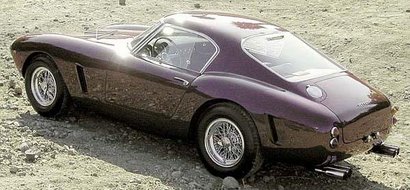
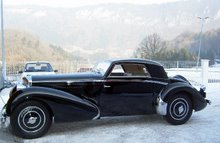
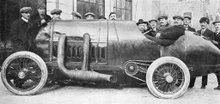


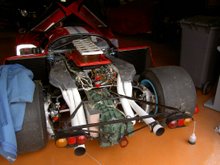

8 comments:
Can you explain why the 1200 would run even smoother than the 1300? Is it the slightly shorter stroke?
I have made a list of the weight of all the flywheels used on Fulvias and the flywheel of the 1200s (and 1100s) are by far the heaviest. 9950gr for the 1100/1200 and 8350gr for the S1 1300.
In some books is stated that the cilinderangle is slightly different for both engines. If true can this be making the difference?
Short stroke and con-rod/stroke ratio might be part of it, but I would think that it is the lower mass of the reciprocating parts that is most likely to be the main factor
I have a question about portsizes vs valve diameter. My 1300HF head has inletports although polished of only 31mm diameter. If the rule of thumb of 85% is used the inletvalve should be 36mm. the stock 37mm should be fine. Exhaust wise my ports are 30mm. 85% (or less) would be 35mm max. Size is 33mm as standard.
How much larger can the ports be made on the 1300heads? And what is the portsize on standard 1600 heads? last but not least, can the 1600 head be fitted to the 1300 block?
Yes agreed about the ports - although for top-end performance I would be inclined to increase the diameter of the long ports to compensate for the inevitable restriction due to the length. I wish someone would measure a Fulvia head on a flow bench and publish the results - these would be helpful I think.
If you read my pieces on this you will see that exhaust ports should be at least the same diameter as the exhaust valve. Enlarging the exhaust ports on Fulvia heads is, as I wrote, tricky - expect to break through to the head bolt - although this doesn't matter too much. I think that 33mm might JUST be possible but I would probably stop at 32. I have had 1600 exhaust ports out to 33mm. The problem is that if you break through on a long port, it is probably impossible to repair.
A standard 1600 head has nominally 32mm ports. I have forgotten what the Fanalone's had - although we have a Fanalone engine here - when I get a chance I will try to measure the ports for you.
The 1600 head will not fit a 1300 block. It will bolt on of course but the oil ways are different.
I was just thinking about the difference in (lancia quoted) horsepower for the smaller engines. For the 1200HF they gave 88Hp. For the 1300 ralley 87Hp. This means the extra 82cc in the 1300 compensates (less one Hp) for the slightly wilder cams in the 1200HF as this is the only difference between the two engines.
I have never seen either a 1200HF or 1300HF engine in pieces. However I have worked on a number of Fanalones. All these had nicely finished ports and inlet manifolds as well as polished con-rods and rockers. Given this expensive detailed work, I imagine that the HF engines of the 1960s were probably very carefully assembled and tested.
The 1300 Rally engine - 818302 - of course had as well as the milder cam profiles, lower compression and none of the detailed finishing that the HF models had.
comment to your last comment:
The cilinderhead of the 1200Hf is not specially finished nor are the rockers. It is exactly the same as the later 1300 ralley heads safe for the earlier manufacturing date.
With the 1300HF the special polishing began.
I have question on valve sizes:
If the exhaustvalve should be equal or smaller than the exhaust port and the 1600 port can not be larger than 33mm why did you install a 37mm valve? The 33 mm valve of the 33 should be perfect!
For the inlet the same. max port dia is 33 to 34mm. Valve should be 37mm max (your 85% rule) What is the use for bigger valves if the ports can not grow along with them...
Thanks for the info on the 1200HF.
I heard from somewhere that larger valves can work with smaller ports - at least for torque and that is what I found.
You should say that the port should be the same size as the exhaust valve and not the other way around!
Post a Comment